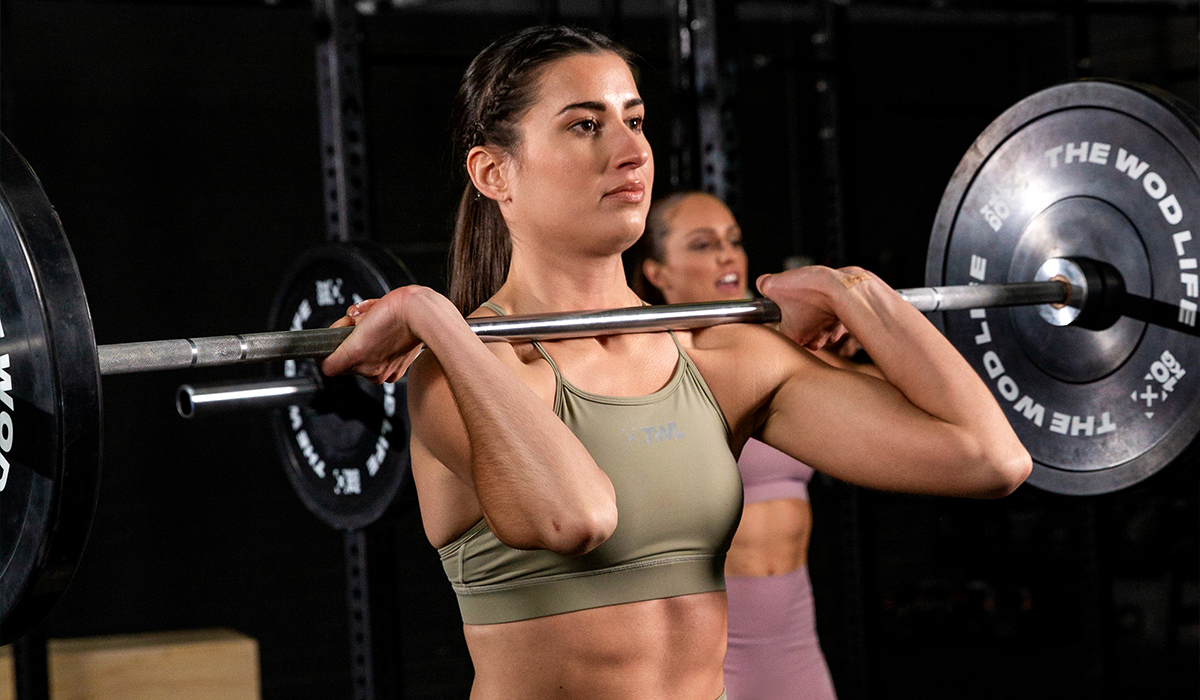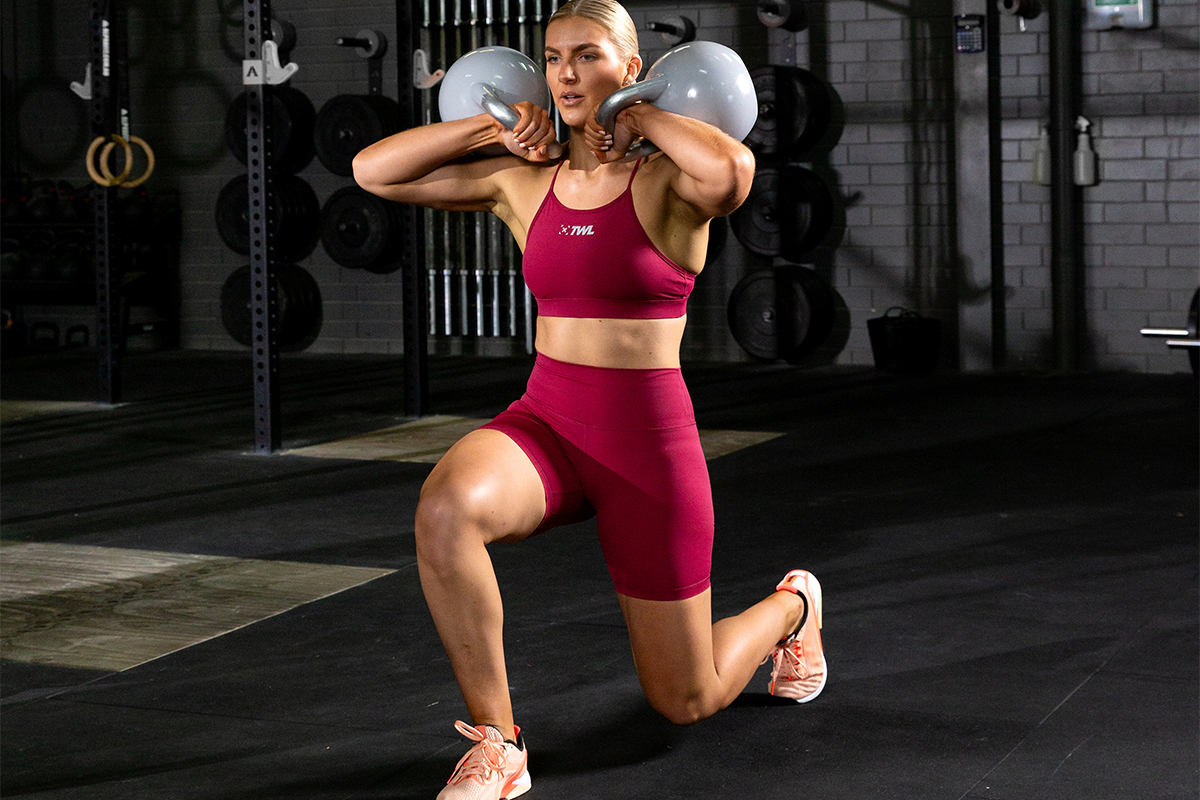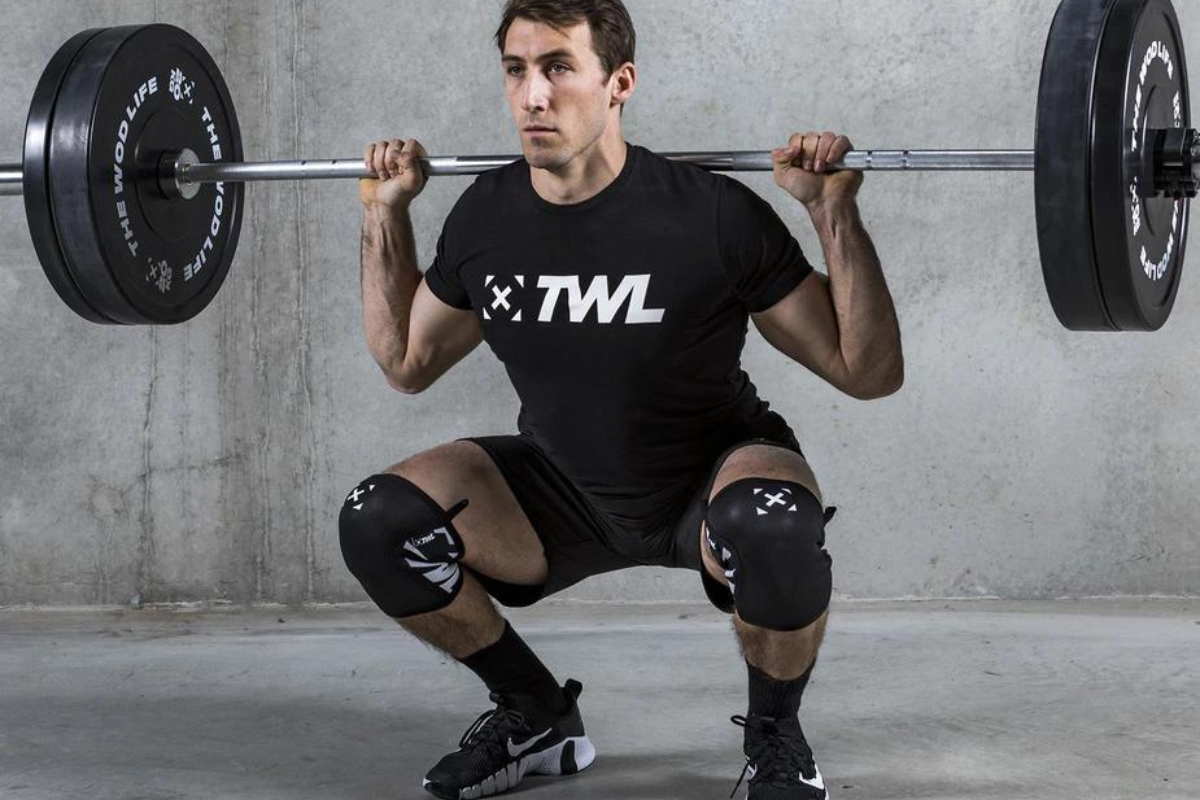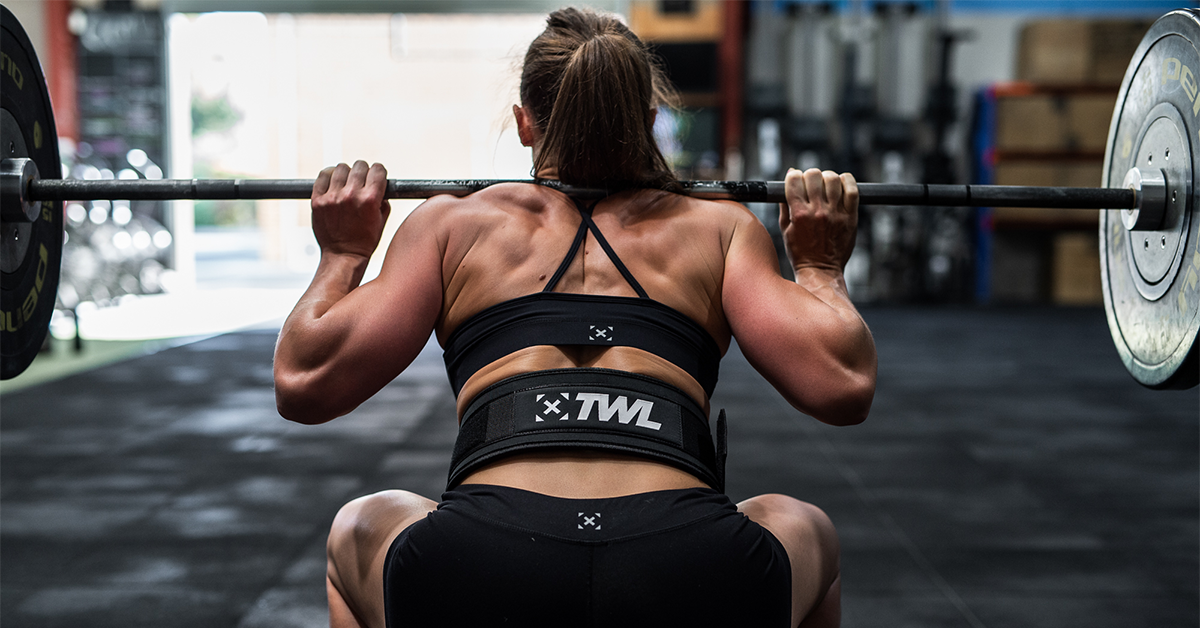There isn’t only one way to back squat — you can do a high-bar squat or a low-bar squat (or something in between). Here’s what you should know about these two variations.
What’s the Difference Between High Bar and Low Bar?
The defining difference between the high-bar squat and the low-bar squat is the bar placement. In the high-bar squat, the bar rests on your traps. With the low-bar squat, the bar rests a few inches lower on your posterior deltoids or your mid-shoulder. There are just a few inches of difference, and it doesn’t change the movement that much — a squat is still a squat. However, the different bar placements influence a few key things.
Shop Now
1. Balance and Back/Core Strength
No matter how you squat, the bar should be balanced over your midfoot throughout the movement. Each foot should have three points of contact with the floor: your big toe, the outside ball of your foot, and your heel. If you drive out of your toes, bailing will be difficult. If you are too far back in your heels, you are more likely to fall backward. What does this have to do with the bar position?
High bar: In the high-bar squat, the bar is further up your torso, which means that if you’re not balanced over your midfoot, the bar has greater leverage over you, making it easier for your spine to round or collapse out of the safe neutral position as you fight to stand up under the weight. Because of this, heavier high-bar squats require significant back strength and trunk stability.
Low bar: In the low-bar back squat, the bar is further down your torso, so it has less leverage. This is part of why most people can lift more weight with the low-bar squat.
View this post on Instagram
2. Torso Position
To maintain proper balance and keep the bar lined up over the midfoot, each squat requires a different torso position.
High bar: The torso position of the high-bar squat is more upright, like the front squat, with the knees pushing forward while the hips sit straight down.
Low bar: Because of the bar’s lower position, to keep the bar lined up over the midfoot, the low-bar squat requires you to lean forward. Your spine remains neutral and your core should be engaged, but your back is very much under the bar.
3. Mobility Requirements
Each squat has varying mobility requirements.
High bar: The upright torso of the high-bar squat requires significant knee and ankle flexion. If you lack the mobility to air squat to full depth with an upright chest and neutral spine, the high-bar squat will expose that.
Low bar: The low-bar squat is an easier position for people with poor ankle mobility. Because of the forward torso, there is greater flexion at the hips while your shins may stay perpendicular to the ground. However, the low-bar requires greater shoulder mobility to hold the bar in place.
View this post on Instagram
Have you checked out The WOD Life’s mobility tools? View our full collection and recover like a pro.
4. Muscle Recruitment
The exact degree of difference in muscle recruitment between low-bar and high-bar squats is not completely clear, but if you’re used to doing to high-bar squat and you switch to low-bar squat, you will probably notice these differences.
High bar: Because the high-bar squat requires greater knee flexion, it recruits the anterior muscles, especially the quadriceps, more so than the posterior chain.
Low bar: Standing up from the low-bar squat’s forward-leaning position fires up the posterior muscles (the glutes and hamstrings) more than the high-bar squat does. However, your quads and hip flexors are still involved.
Who Uses Which Squat?
The high-bar squat is most commonly used by Olympic lifters (and functional fitness athletes) because of the supposed carryover into the upright position at the bottom of the snatch and clean. Because the low-bar squat enables most athletes to move more weight, it’s commonly used by powerlifters.
View this post on Instagram
If I Can Lift More Weight With the Low Bar, Why Would I Ever Use the High Bar?
Just because the low-bar squat enables you to move more weight doesn’t mean that it’s making you stronger than the high-bar squat. The low-bar’s differences in leverage and muscle recruitment simply make it easier to move heavier weights. If you fail to lift an easy low-bar weight in the high-bar position, that may mean your trunk — not your legs — lacks strength and stability. Training the high-bar squat improves your core as well as your legs, and core stability carries over into every other part of the gym and life, so why wouldn’t you high-bar squat?
Which bar position do you prefer: low or high?
If your squats have hit a plateau, we can help! Check out our squat program.

















